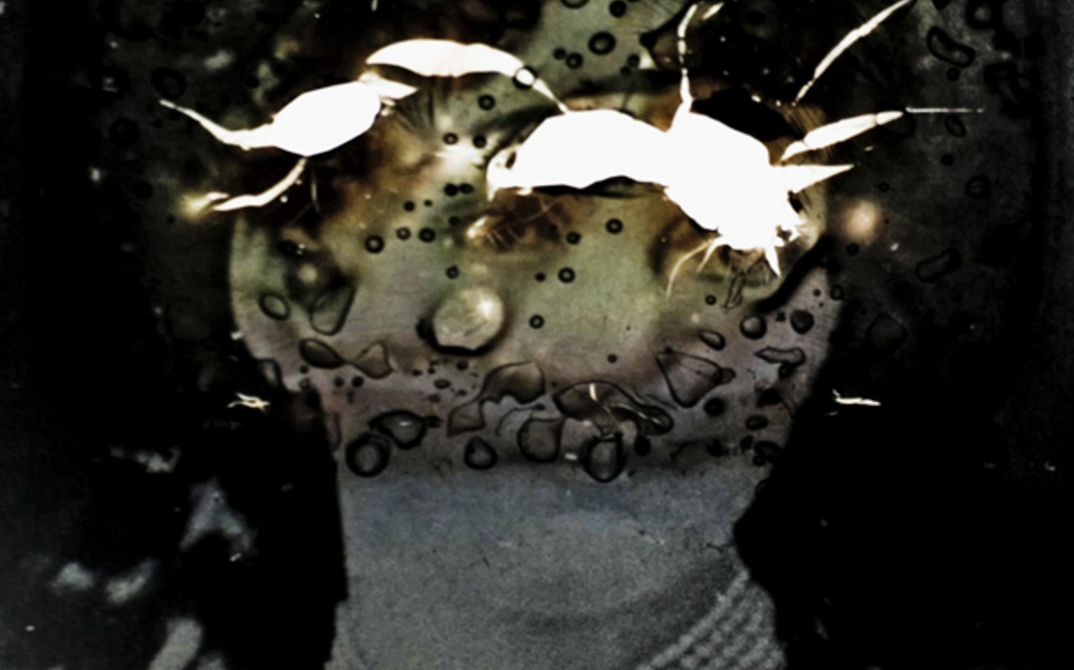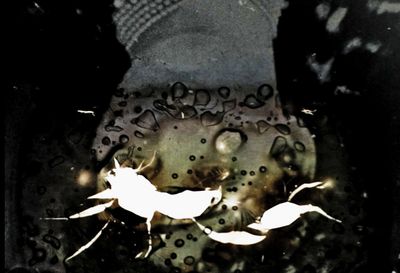Celluloid Corridors Remixed
A reel unwinds into a stream of celluloid consciousness, another thread that was extended through another labyrinth in another time. Pulled through lives, places, mediums, histories, and politics, the celluloid thread is paradoxically finite, bookended in a round canister/video box/compact disks/HDD, narrativising chaos, projecting linearity/sanity. Standing in a film archive that attempts to be “living,” relocated between a former crematorium and a neighbouring graveyard, Jose Saramago’s “All the Names” springs to mind, particularly a climactic scene where the protagonist reaches a labyrinthine graveyard; the end station of a long, obsessive, unorthodox search for a mysterious woman. A mystical shepherd has been going around swapping the plates and the tombstones, in an attempt to give the dead an equal chance of being visited/forever lost. The protagonist arrives at a dead/open end. Cinema history starts from here! I am standing on the Crossroads, three days after Memorial Day, where the cinematic portrait of the great Haitian journalist, Jean Dominique, was shown right here at the Cinema. The medium of film is a sacred medium. Like the medium of séance ceremonies, it has the power to invoke the dead, les morts, les esprits, the invisible worlds. For it was the Senegalese filmmaker, Djibril Diop Mambéty who once said: “Cinema is magic in the service of dreams, it is a gift from our ancestors, they struggled and prepared it for us for over three thousand years.” Film canisters have a certain silence to them. In an archive space, they look almost identical in their solid shape and color, to the point where the rows of reels resemble a wall/a passageway. Is it possible that a film dies between that moment and the moment of its premiere? Where a new stage awaits it; loops of resurrections, as it enters the realm of the undead. People speak about the Death of Cinema: students, cinephiles, scholars, the academy, film-goers, the youth. But before we bury this history, before its inevitable death, we need to open up the history of film, with all its lines of flights, with all its unexpected mutations and digressions. Who invented Cinema? Cinema history starts form here! What happened in the Golden Age of Hollywood, and its flourishing in the Hollywood Hills? Hollywood owes its debt to the ancient burial grounds from which it has grown. Approaching the translucent celluloid strip with the naked eye implies seeing it and seeing through it at the same time. A film both points to itself and refers to a larger image. The individual frames reveal images, and between the frames, a context can be retrieved. It’s where the walls of the world become thin, and the crack from the void leaks in. Much like approaching a strand of DNA, it promises that once uncoiled, and with some imagination/investigation, one can access layers of information, stories, and histories that a specific print of film witnessed throughout its life/afterlife. A history of resurrections. I want to be possessed by the goddess(es) of cinema. In the timelessness of the archive mindset, we have the space to speak of the films that watched us. Images can recall their past lives as parts of a continuum before they were extracted, isolated, appropriated/imprisoned. Does a black and white film remember its own original colored existence? We need to continue this superstition and archaic belief that cinema has a soul, a gros bon ange, that cinema has souls, a petit bon ange, and that there exist alchemical reactions that are drawn from the celluloid as it hits the light of the lens, and the unknowable, in the dance till the end of time.
(Dice Miller, Mohamed A. Gawad, Berlin, 2018)

